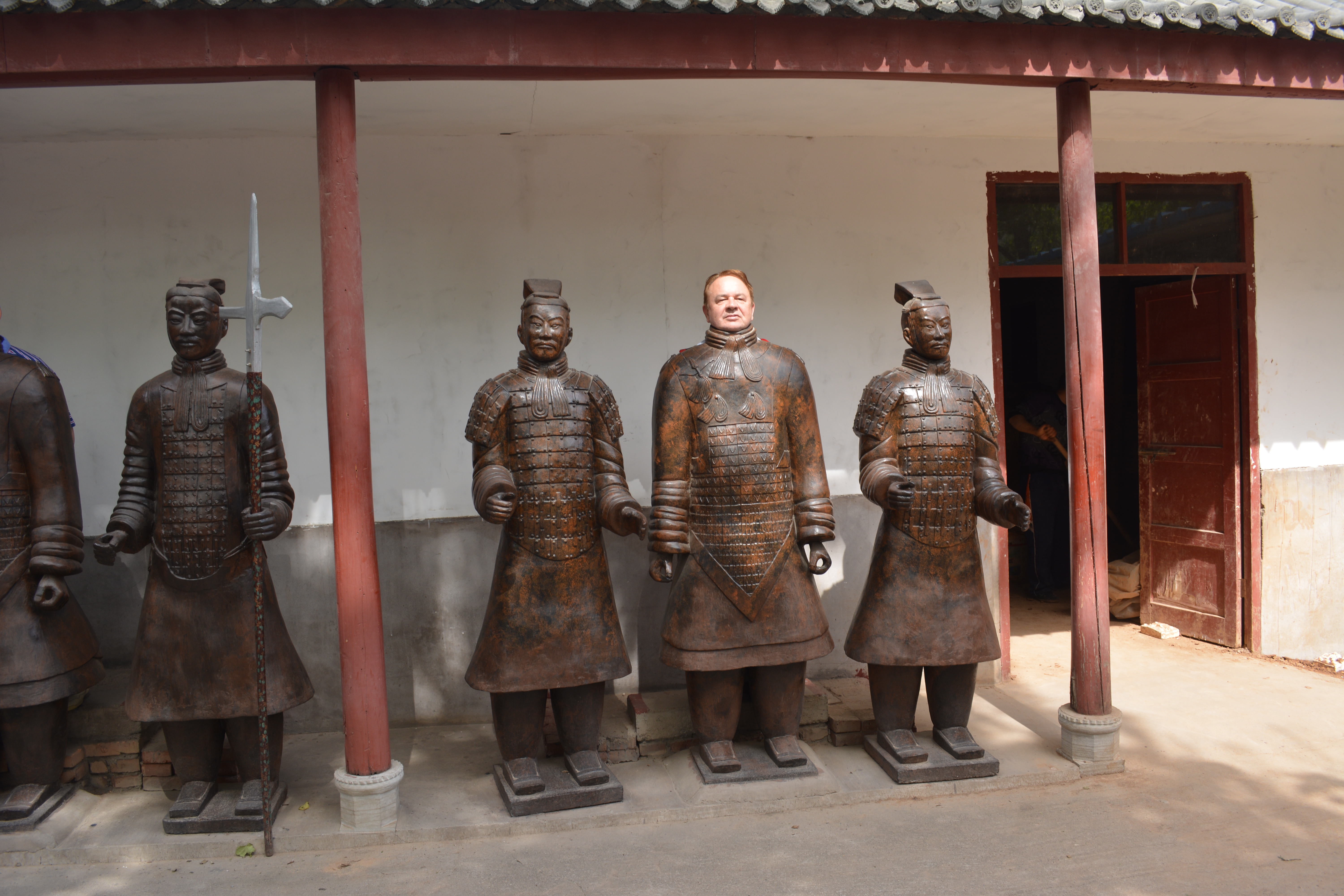
AsianOverland.net
Tour Guide - Itinerary
Asian Overland Sydney to London
Started 22/06/2022 Finished 21/06/2023365 Days ITINERARY
Day 75 date 04/09/2022BADALING to XIAN, CHINA
ASIANOVERLAND.NET SYDNEY TO LONDON DAY 75: BADALING TO XIAN, CHINA
The Silk Road is a network of Eurasian trade routes from the second century BCE. Spanning over 6,400 kilometers, it played a central role in developing economic, cultural, political, and religious interactions between East and West. The Silk Road is named after the highly lucrative trade of silk textiles that were produced almost exclusively in China.
The Silk Road began with the Han dynasty's expansion into Central Asia in 114 BC to explore unknown lands in search of potential trading partners and allies. The information and goods gathered by these expeditions prompted formal diplomatic and commercial dispatches, as well as efforts to protect the routes with soldiers and extensions of the Great Wall.
Known as Chang'an for much of its history, Xi'an is one of the Chinese Four Great Ancient Capitals, having held the position under some of the most important dynasties in Chinese history, the Western Zhou, Western Han, Sui, Northern Zhou and Tang. The city is the starting point of the Silk Road and home to the Terracotta Army of Emperor Qin Shi Huang, both listed as UNESCO World Heritage sites. Xi'an is the second most popular tourist destination in China.
Xi'an became a cultural and political centre of China in the 11th century BC with the founding of the Zhou dynasty. The capital of Zhou was established in the twin settlements of Fengjing and Haojing, together known as Fenghao. In 738 BC, King Ping of Zhou moved the capital to Luoyang due to political unrest.
Following the Warring States period, China was unified under the Qin dynasty (221–206 BC) for the first time, with the capital moved to Xianyang, just northwest of Xi'an. The first emperor of China, Qin Shi Huang ordered the construction of the Terracotta Army and his mausoleum east of Xi'an immediately after his ascension to the throne.
The Terracotta Army comprises terracotta sculptures depicting the armies of Emperor Qin Shi Huang. It was buried with the emperor in 210–209 BCE for the purpose of protecting the emperor in his afterlife. The Terracotta Army is part of a much larger necropolis area of 98 square kilometers.
The necropolis was constructed as an image of the emperor's imperial palace, and covers a large area around the tomb mound of the first emperor. The earthen tomb mound is at the foot of Mount Li in a pyramidal shape, and is surrounded by two rammed earth walls with gateway entrances. The necropolis includes offices, halls, stables, other structures and an imperial park around the tomb mound. The warriors stand guard to the east of the tomb. Up to 5 metres of reddish, sandy soil accumulated over the site in the two thousand years following its construction.
In 202 BC, the founding emperor Liu Bang of the Han dynasty established his capital in Chang'an County and his first palace, Changle Palace ("Perpetual Happiness") was built across the river from the ruins of the Qin capital. Two years later, Liu Bang built Weiyang Palace ("Never Ending Palace"), the largest palace ever built, covering 4.8 square kilometres, which is 7 times the size of the Forbidden City and 11 times the size of Vatican City.
The original Xi'an city wall was started in 194 BC and took 4 years to finish. The wall measured 26 km in length and 16 m in thickness at the base, enclosing an area of 36 km2.
In the year 190, during uprisings and rebellions before the Three Kingdoms Period, a powerful warlord named Dong Zhuo moved the court from Luoyang to Chang'an to avoid a coalition of other powerful warlords against him.
Following four hundred years of unrest, the Sui dynasty united China again in 582. The emperor of Sui ordered a new capital to be built southeast of the Han capital, called Daxing. It consisted of three sections: the Imperial City, the palace section, and the civilian section, with a total area of 84 km2 within the city walls. At the time, it was the largest city in the world. The city was renamed Chang'an by the Tang dynasty.
Construction of the Giant Wild Goose Pagoda began in 652. This pagoda was 64 m in height, and built to store the translations of Buddhist writings obtained from India. In 707, construction of the Small Wild Goose Pagoda began. This pagoda measured 45 m tall at the time of completion, and was built to store the translations of Buddhist sutras by Yijing. The massive 1556 Shaanxi earthquake damaged the tower and reduced its height to 43.4 m.
Chang'an was devastated at the end of the Tang dynasty in 904. Residents were forced to move to the new capital city in Luoyang, and only a small area in the city continued to be occupied.
In 1370 during the Ming dynasty, a new wall and moat were constructed which remain intact today. The wall measures 12 km in circumference, 12 m in height, and 18 m (49.21–59.06 ft) in thickness at the base. It’s a great walk or bike ride, take your pick.
© This work is copyright. Apart from any use permitted under the Copyright Act 1968, no part may be reproduced by any process, nor may any other exclusive right be exercised, without the permission of Peter Searle, peter@portseavillageresort.com; 1980-2024.
Website built by Justin O’Dea www.webdeveloperdocklands.com.au






